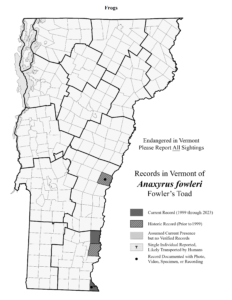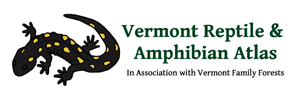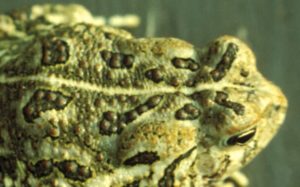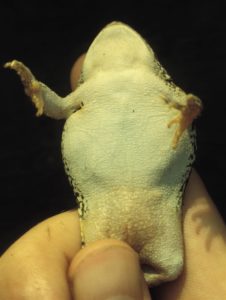Anaxyrus fowleri
Identification
The Fowler’s Toad is very similar to the American Toad, but instead of having a black and white speckled belly, it has a pure white belly with at most one central spot. The Fowler’s Toad has only small warts in the black spots along its back. It measures 2-3 inches long.
The Fowler’s Toad’s call is an unmusical “waaa” that has been likened to the sound of a sheep in distress. It may be heard in June and July, primarily at the beginning of July.
Like the American Toad, the Fowler’s Toad’s eggs are laid in long strings, but due to the extreme rarity of Fowler’s Toads in Vermont, any amphibian eggs laid in long strands can safely be assumed to be those of American Toads except at known Fowler’s Toad breeding sites.
More detailed information about how to differentiate Fowler’s Toads from American Toads in Vermont is available by downloading this 2-page document.
Get more detailed identification and life history information by downloading the chart here.
You can learn more about this species and see some video footage by checking out this clip from our Rattlers, Peepers & Snappers DVD.
Range/Habitat

[ click image to zoom | download printable PDF ]

[ click image to zoom | download printable PDF ]
The Fowler’s Toad is very rare and has been found only in the southern Connecticut River Valley. It prefers naturally disturbed shorelines.
Status
This species has a state natural heritage rank of S1 (very rare). The Fowler’s Toad was listed as state-endangered in 2015. It has been designated a Species of Greatest Conservation Need (high priority) in Vermont’s Wildlife Action Plan. Please report all sightings of this species in Vermont. Take photos if possible of the back and belly (or record the call). Even historic sighting information is useful.
Additional Photos
More Info
Anaxyrus fowleri was Bufo fowleri until 2008.
- Anaxyrus fowleri at Animal Diversity website
- Anaxyrus fowleri at Amphibiaweb
- Anaxyrus fowleri in the Vermont Agency of Natural Resources’ Wildlife Action Plan: Amphibian & Reptiles (9/25/2015 draft)
- Bufo fowleri at the Yale Peabody Museum website
- Listen to Fowler’s Toad calls
at Frog Quiz
or from the Yale Peabody Museum (.wav format)
Species summary written by Ariel K. McK. Burgess.





